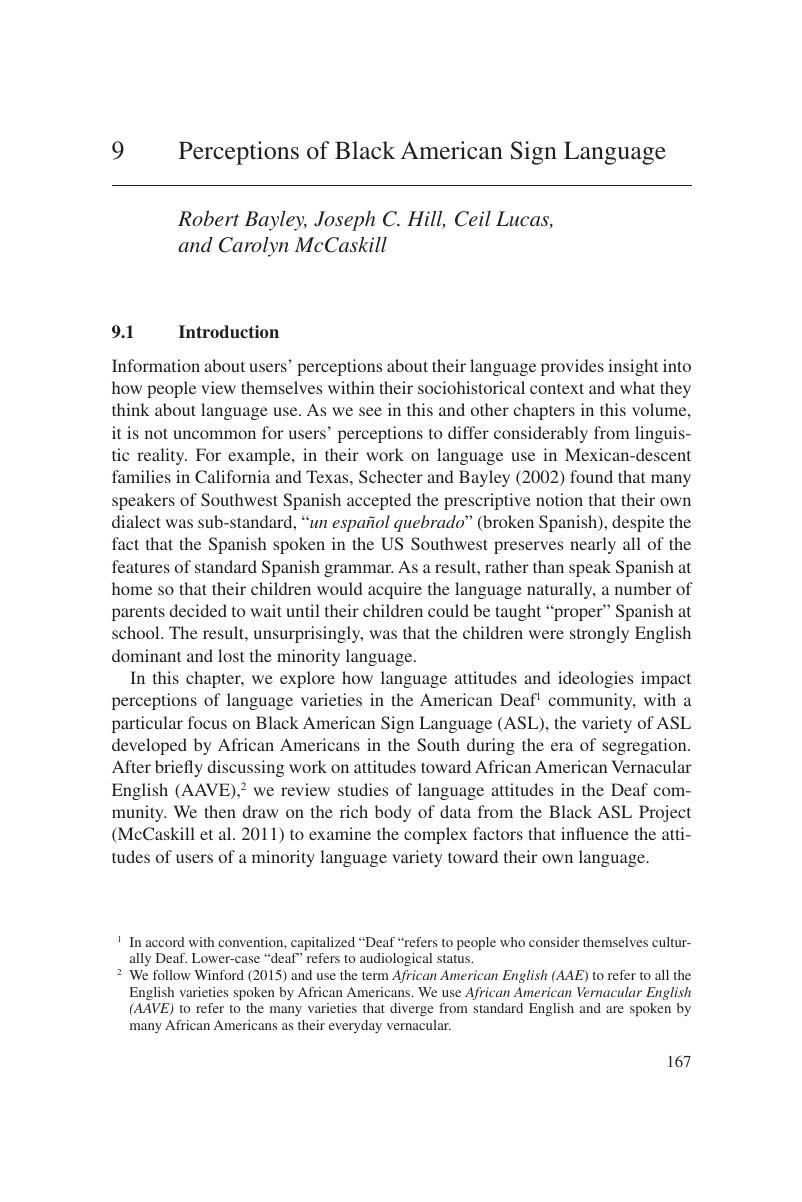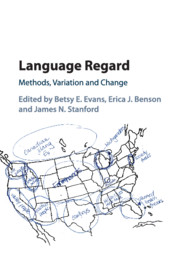Book contents
- Language Regard
- Language Regard
- Copyright page
- Dedication
- Contents
- Figures
- Tables
- Notes on Contributors
- Preface
- Acknowledgments
- Introduction
- Part I Language Regard: Varied Methods
- Part II Language Regard and Language Variation
- 8 Language Regard and Migration: Cuban Immigrants in the United States
- 9 Perceptions of Black American Sign Language
- 10 Ethnolinguistic Assertions Regarding People Who Allegedly “Talk White,” or “Talk Black”
- 11 Language Regard in Liminal Hmong American Speech Communities
- 12 Language Regard and Sociolinguistic Competence of Non-native Speakers
- Part III Language Regard and Language Change
- Index
- References
9 - Perceptions of Black American Sign Language
from Part II - Language Regard and Language Variation
Published online by Cambridge University Press: 12 January 2018
- Language Regard
- Language Regard
- Copyright page
- Dedication
- Contents
- Figures
- Tables
- Notes on Contributors
- Preface
- Acknowledgments
- Introduction
- Part I Language Regard: Varied Methods
- Part II Language Regard and Language Variation
- 8 Language Regard and Migration: Cuban Immigrants in the United States
- 9 Perceptions of Black American Sign Language
- 10 Ethnolinguistic Assertions Regarding People Who Allegedly “Talk White,” or “Talk Black”
- 11 Language Regard in Liminal Hmong American Speech Communities
- 12 Language Regard and Sociolinguistic Competence of Non-native Speakers
- Part III Language Regard and Language Change
- Index
- References
Summary

- Type
- Chapter
- Information
- Language RegardMethods, Variation and Change, pp. 167 - 182Publisher: Cambridge University PressPrint publication year: 2018
References
- 1
- Cited by

